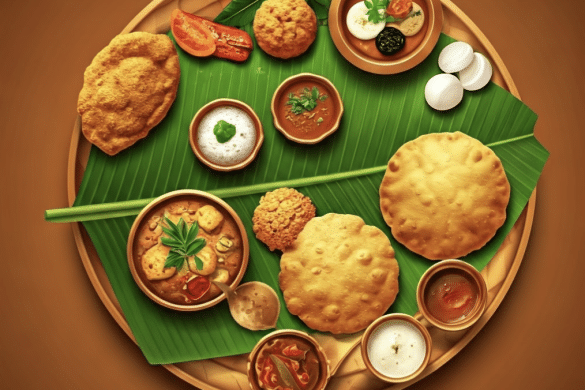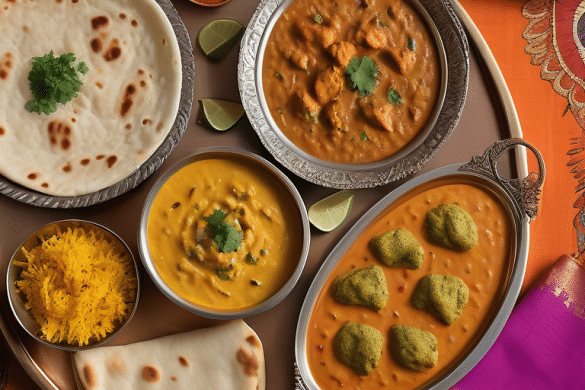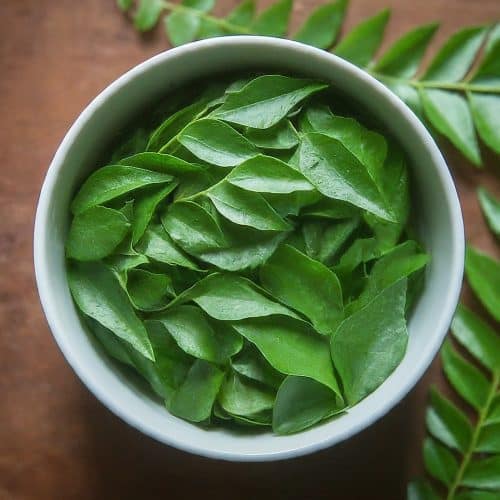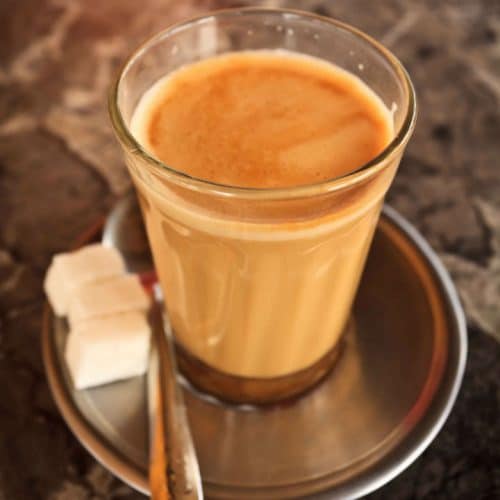Are you looking for a healthier alternative to butter? Look no further than ghee. Ghee, also known as clarified butter, has been used in Indian cuisine for centuries and is now gaining popularity worldwide as a healthier option. This article explores why ghee is better than butter and how to incorporate it into your cooking routine.
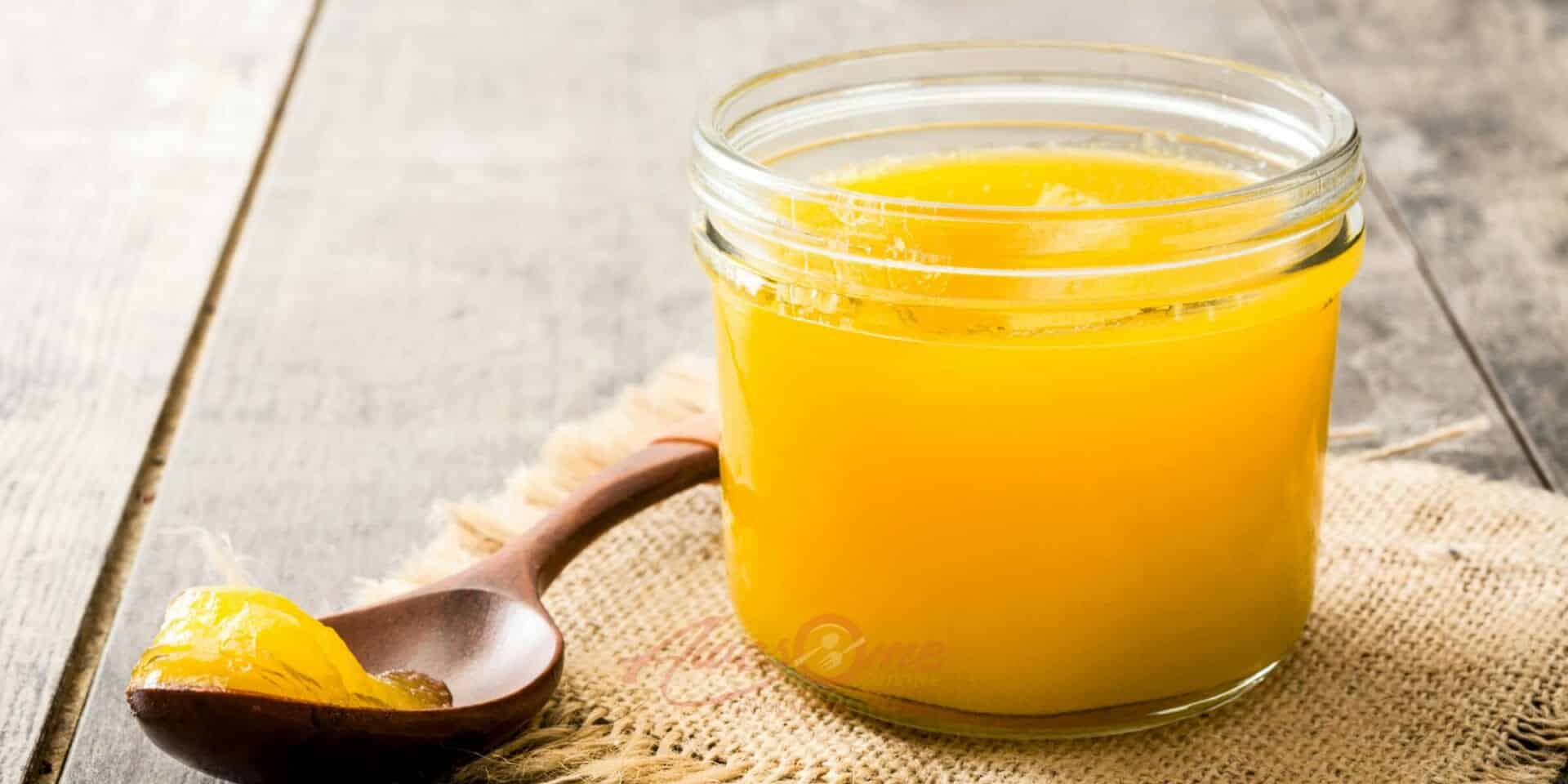
Ghee or Clarified Butter
Firstly, let’s discuss the benefits of choosing ghee over butter. Ghee is made by simmering butter until the milk solids separate from the liquid fat, which is then strained and bottled. This process removes lactose and casein proteins in regular butter, making ghee suitable for those with lactose intolerance or sensitivity. Additionally, ghee has a higher smoke point than regular butter, which can be heated to higher temperatures without burning or producing harmful compounds. So ghee is the way to go if you’re looking to fry or sauté foods at high heat without damaging their nutritional value or taste.
Why Choose Ghee?
Why should you choose ghee over butter? Well, let me tell you. Ghee is a healthier option than butter due to its high smoke point and lack of dairy solids. Butter can quickly burn and release harmful free radicals into the air when heated. Conversely, ghee has a higher smoke point, which means it can be used in cooking without burning or releasing harmful toxins.
In addition to its high smoke point, ghee contains healthy fats that benefit your overall health. Unlike butter high in saturated fats, ghee is rich in butyric acid, which has anti-inflammatory properties and supports digestive health. Moreover, studies have shown that consuming ghee in moderation can improve cholesterol levels and reduce the risk of heart disease.
So why not choose ghee? It’s a better alternative to butter that offers more health benefits and versatility in cooking. Use ghee as a substitute for butter when baking or sautéing vegetables for added flavour without compromising your health goals. Try it and see how this healthier option can enhance your meals!
Cooking with Ghee
Cooking with ghee adds flavour and richness to your dishes that cannot be replicated using regular butter. Ghee is made by simmering butter until the water evaporates and the milk solids separate from the fat. The resulting liquid gold has a nutty, caramel-like flavour that enhances any dish.
One of the most significant differences between ghee and butter is their smoke point. Ghee has a higher smoke point than butter, which means it can withstand higher cooking temperatures without burning or smoking. This makes it ideal for high-heat cooking methods like sautéing, frying, or roasting. You don’t have to worry about burning or smoking as quickly as regular butter when you cook with ghee.
Not only does cooking with ghee add delicious flavour to your dishes, but it’s also healthier than regular butter. Ghee contains less lactose and casein than butter, making it easier to digest for lactose intolerant or sensitive to dairy products. It also has more healthy fats like omega-3 fatty acids and vitamin K2. So not only will your food taste better when cooked with ghee, but you’ll also be nourishing your body healthier than if you were using plain old butter.
Ghee vs Butter Nutrition
Comparing the nutritional profiles of ghee and butter reveals some interesting differences. Butter contains more cholesterol and saturated fat than ghee, making it less healthy for your heart. Conversely, ghee has a higher concentration of fat-soluble vitamins like A, D, E, and K.
Regarding cholesterol levels, ghee is a better option as it only contains trace amounts of cholesterol. At the same time, butter has around 31mg per tablespoon. The saturated fat content in butter is also higher than in ghee, which can increase the risk of heart disease. In contrast, ghee has a lower concentration of saturated fats, which makes it beneficial for your overall health.
The nutritional profile of both these dairy products varies significantly based on their preparation. Butter made from pasteurized milk may have different benefits than organic grass-fed butter. In contrast, processed ghee may not be as healthy as traditionally made. Therefore, when choosing between ghee and butter, nutritionally speaking – opt for organic grass-fed butter or traditionally made pure cow’s milk ghee for maximum health benefits.
Ghee is Healthier
If you want a healthier option to add to your diet, consider changing your dairy choices. Ghee, or clarified butter, is an excellent alternative to regular butter with significant health benefits. One of the critical differences between ghee and butter is their fat content.
When comparing ghee vs butter nutritionally, ghee has less cholesterol and saturated fat. This makes it a better choice for those watching their cholesterol levels or trying to reduce their intake of unhealthy fats. Ghee also contains more medium-chain triglycerides (MCTs), which are easily digested and provide quick energy for the body.
To further illustrate the differences between ghee and butter, take a look at this table:
| Nutrient | Ghee | Butter |
|---|---|---|
| Cholesterol | 0mg | 30mg |
| Saturated Fat | 7g | 11g |
| MCTs | Higher | Lower |
As you can see, ghee is the winner regarding overall health benefits. So next time you cook or spread something on your toast, consider using ghee instead of regular butter for a healthier option that still tastes great.
Rich in Nutrients
One surprising fact about clarified butter is that it contains a wealth of essential nutrients that are beneficial for overall health. While many assume that ghee and butter have similar nutritional profiles, this couldn’t be further from the truth. Ghee is much richer in nutrients than regular butter, making it a healthier choice for those looking to improve their diet.
Here are just a few of the critical nutrients found in ghee:
- Vitamin A: Ghee is an excellent source of vitamin A, which plays a crucial role in maintaining healthy vision, skin, and immune function.
- Butyric acid: This short-chain fatty acid has been linked to improved gut health and reduced inflammation.
- Conjugated linoleic acid (CLA): CLA is a type of healthy fat that reduces inflammation, improves insulin sensitivity, and even aid in weight loss.
When you compare the nutritional profile of ghee vs. regular butter, it’s clear that ghee comes out on top. Not only does it contain more essential vitamins and minerals than butter, but it also boasts a range of unique compounds that can help support overall health.
So if you’re looking for a simple way to upgrade your diet and boost your nutrient intake, consider swapping out your regular butter for some delicious and nutritious ghee instead!
Difference Between Ghee and Butter
You may be wondering what sets clarified butter apart from its more common counterpart, and the answer lies in its distinct nutritional profiles. Clarified butter is also known as ghee, a staple ingredient in Indian cuisine. Ghee is made by melting butter and removing the milk solids and water content. This process results in a product that has a longer shelf life than regular butter.
The main difference between ghee and clarified butter lies in their nutritional profile. Ghee contains no lactose or casein, making it a safe option for people who are lactose intolerant or have dairy allergies. On the other hand, clarified butter still contains some of these components since it doesn’t go through the same filtration process as ghee. Additionally, ghee has higher levels of butyrate compared to regular butter. Butyrate is a type of fatty acid linked to numerous health benefits, such as reducing inflammation and improving gut health.
Another essential factor to consider when comparing ghee vs clarified butter is their cholesterol content. While both products have similar amounts of total fat per serving, ghee has lower cholesterol levels due to removing milk solids during production; for individuals who are watching their cholesterol intake, opting for ghee instead of regular butter can be a healthier choice.
While ghee and clarified butter share similarities in taste and cooking properties, their nutritional profile differ significantly. Ghee’s lack of lactose and casein makes it an ideal option for those with dairy sensitivities. In contrast, its lower cholesterol makes it an attractive choice for people looking to improve their heart health.
Why Ghee is the Better Choice
Are you looking for a healthier alternative to traditional butter? Consider the nutritional benefits of clarified butter’s close cousin, ghee. Ghee is made by simmering butter until the water and milk solids are removed, leaving behind pure butterfat. This process gives ghee a higher smoke point than butter, making it ideal for high-heat cooking.
But that’s not all – ghee is also better for heart health. While both ghee and butter contain saturated fat, studies have shown that ghee may improve cholesterol levels because of its high concentration of conjugated linoleic acid (CLA). CLA has been found to reduce inflammation and improve heart health.
To further illustrate the benefits of choosing ghee over butter, take a look at this table:
| Nutrient | Ghee | Butter |
|---|---|---|
| Fat | 14g per tablespoon | 11g per tablespoon |
| Saturated Fat | 9g per tablespoon | 7g per tablespoon |
| CLA Content | Higher concentration than butter | Negligible amount |
As you can see, while both options contain fat and saturated fat, ghee has a higher concentration of CLA which can contribute to improved heart health. So next time you’re looking for a spread or cooking oil option, consider giving ghee a try!
Using Ghee as a Substitute
Switching to ghee as a cooking substitute can add flavour and depth to your dishes, enhancing the overall experience. Here are four reasons why using ghee instead of butter is a better alternative:
- Ghee has a higher smoke point than butter. This means it can be heated to a higher temperature before burning and releasing harmful compounds into the air. When you cook with ghee, you’ll get a golden brown sear on your meats and vegetables without worrying about a burnt taste.
- Ghee contains more healthy fats than butter. While both products are high in saturated fat, ghee has less lactose and casein (milk proteins), which makes it easier for some people to digest. Plus, ghee is rich in butyric acid, which supports gut health and reduces inflammation.
- You only need half the amount of ghee compared to butter when cooking or baking because it’s more concentrated. For example, if a recipe calls for one tablespoon of butter, you only need 1/2 tablespoon of ghee instead.
- Ghee consumption has several health benefits, such as improved digestion, reduced risk of heart disease, lower cholesterol levels, and even weight loss!
Making the switch from butter to ghee can significantly enhance your cooking experience while providing numerous health benefits at the same time. So go ahead and give this delicious ingredient a try!
Frequently Asked Questions
How is ghee made?
To make ghee, butter is heated, and the milk solids are removed through a straining process. The resulting golden liquid has a higher smoke point than butter. It is free of lactose and casein, making it easier to digest for some people.
Is ghee suitable for people with lactose intolerance?
Yes, ghee is suitable for people with lactose intolerance. Milk solids are removed from butter during the clarification process, leaving only pure fat behind. This means that ghee contains negligible amounts of lactose and can be consumed by those with lactose intolerance.
Can ghee be used in baking?
Yes, you can use ghee in baking. It has a higher smoke point than butter, so it won’t burn as quickly. Plus, it adds a rich and nutty flavour to baked goods.
What is the shelf life of ghee?
Ghee has a long shelf life of up to 12 months if stored properly in an airtight container and away from direct sunlight. It can last even longer when refrigerated.
How does the taste of ghee compare to butter?
Ghee has a nuttier, richer taste than butter due to its caramelization during the clarification process. It also lacks any milk solids, making it easier for digestion and suitable for lactose intolerant people.
Conclusion
So, there you have it – ghee is the better choice when compared to butter. It’s healthier, richer in nutrients, and has a higher smoke point, making it ideal for cooking at high temperatures.
When using ghee as a substitute for butter, you’ll also reduce your intake of saturated fats and increase your consumption of healthy fatty acids like butyric acid. Also, ghee is lactose- and casein-free, making it an excellent option for those with dairy allergies or sensitivities.
Switching to ghee can be an easy way to improve your overall health and well-being without sacrificing taste or quality in your cooking. So why give it a try today?

